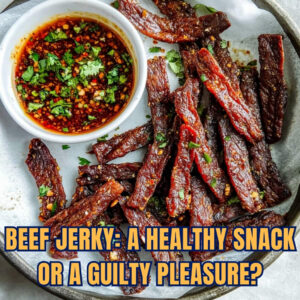White rice, a staple food for billions worldwide, often sparks heated debates about its nutritional value. Is it a dietary villain, as some claim, or can it hold a place in a healthy diet? The answer, as with most food questions, is nuanced. It’s not a simple “yes” or “no.” This comprehensive guide will delve into the nutritional profile of white rice, examining its benefits and drawbacks, and ultimately helping you make an informed decision about its place in your own diet. For further exploration into rice varieties and their culinary uses, check out resources like gohanasahiruyoru.com, a site dedicated to the art and science of rice.
Nutritional Profile of White Rice
White rice, unlike brown rice, undergoes significant processing, which removes the bran and germ layers. This refining process, while increasing shelf life and improving texture, also strips away a significant portion of the rice’s nutritional value. Let’s look at the nutritional breakdown per cooked cup (approximately 195g):
- Calories: Approximately 200-240
- Carbohydrates: Around 45-50g, primarily simple carbohydrates
- Protein: Relatively low, around 4-5g
- Fat: Negligible
- Fiber: Very low, significantly reduced during processing
- Vitamins and Minerals: Contains small amounts of thiamine, niacin, and iron, but significantly less than brown rice.
The Drawbacks of White Rice Consumption
The nutritional shortcomings of white rice are its primary drawbacks. The removal of the bran and germ layers leads to a significant reduction in:
- Fiber: Fiber is crucial for digestive health, promoting regularity and preventing constipation. White rice’s low fiber content can contribute to digestive issues.
- Vitamins and Minerals: The bran and germ layers are rich in essential vitamins and minerals like magnesium, selenium, and various B vitamins. The absence of these nutrients in white rice can lead to deficiencies if it constitutes a large portion of one’s diet.
- Antioxidants: These protective compounds are concentrated in the bran layer and are lost during processing. This reduces white rice’s ability to combat oxidative stress and protect against chronic diseases.
- Glycemic Index (GI): White rice has a high GI, meaning it causes a rapid spike in blood sugar levels. This is particularly concerning for individuals with diabetes or insulin resistance, as it can lead to blood sugar imbalances.
High consumption of white rice has been linked to an increased risk of:
- Type 2 Diabetes: The high GI and low fiber contribute to this increased risk.
- Weight Gain: The high GI and lack of satiety can lead to increased caloric intake.
- Heart Disease: While not a direct cause, the lack of essential nutrients and the contribution to weight gain can indirectly increase the risk.
- Certain Cancers: Some studies suggest a correlation between high white rice consumption and increased cancer risk, although more research is needed.
Potential Benefits of White Rice
Despite its drawbacks, white rice isn’t entirely without benefits. Its positive aspects are largely tied to its practicality and palatability:
- Accessibility and Affordability: White rice is widely available and relatively inexpensive, making it a staple food for many populations.
- Digestibility: The absence of fiber makes it easier to digest than brown rice, beneficial for individuals with sensitive digestive systems.
- Versatile in Cooking: White rice’s neutral flavor and texture make it incredibly versatile, suitable for various dishes and cuisines.
- Long Shelf Life: Its processing method enhances its shelf life, reducing food waste.
- Energy Source: It provides a readily available source of carbohydrates, which the body uses for energy.
Moderation and Healthy Eating Habits
The key to incorporating white rice into a healthy diet lies in moderation and mindful consumption. It shouldn’t be the cornerstone of your diet, but rather a component consumed in smaller portions and balanced with nutrient-rich foods. Consider these strategies:
- Pair with nutrient-rich foods: Combine white rice with vegetables, lean proteins, and healthy fats to increase the overall nutritional value of your meal.
- Limit portion sizes: Be conscious of your serving sizes to avoid overconsumption of carbohydrates.
- Choose enriched varieties: Some white rice is fortified with essential vitamins and minerals, partially offsetting the nutritional losses during processing.
- Incorporate other grains: Diversify your grain intake by including brown rice, quinoa, oats, and other whole grains for a broader spectrum of nutrients.
- Focus on a balanced diet: White rice is just one component of your overall diet. Prioritize a balanced intake of fruits, vegetables, lean proteins, and healthy fats.
White Rice vs. Brown Rice: A Comparison
The most common comparison is between white rice and brown rice. Brown rice retains the bran and germ layers, resulting in a significantly different nutritional profile. Here’s a brief comparison:
| Nutrient | White Rice | Brown Rice |
|---|---|---|
| Fiber | Low | High |
| Vitamins & Minerals | Low | High |
| Antioxidants | Low | High |
| Glycemic Index (GI) | High | Low to Moderate |
| Digestibility | High | Lower |
